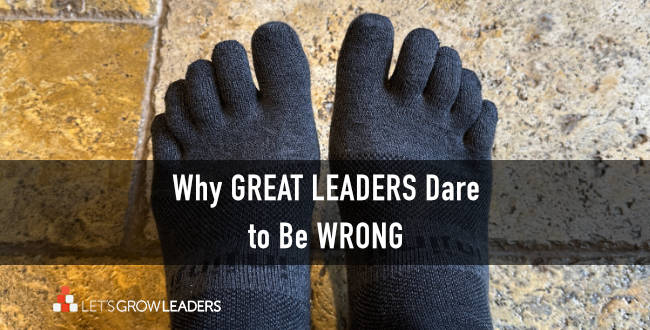Transform your leadership and team’s results with the power of small habits
Your team won’t become a high-functioning powerhouse after one offsite. You can’t be a trusted, influential leader after one week on the job. There are no leadership hacks or shortcuts that will transform your organization or results. But there is a way to do all these things that’s available to you and every leader: the power of small habits.
A Riddle and a Dream
Let’s kick things off with a quick riddle: What tips the scales at over a hundred million tons, floats, and can inspire daydreams or cause destruction?
Keep thinking about it as we travel back to 1845.
In the mid-19th century, no suspension bridge designed for trains existed. The idea was deemed far too risky, and most engineers wrote it off as an unsafe proposal. Fast forward ten years, the world was introduced to its first railway suspension bridge, connecting the US and Canada over the Niagara River. The story of this engineering marvel begins with a simple picnic and a letter.
While Canadian entrepreneur William Merritt was enjoying a picnic with his wife, they received a letter from their children touring Europe. In this letter, the kids described an impressive suspension bridge they’d seen in Switzerland. This sparked a dream in Merritt – he envisioned a similar bridge across the Niagara River, capable of facilitating rail travel and enhancing trade with the rapidly growing US network.
Merritt obtained the government’s permission, formed a company, and hired the right talent – in this case, Charles Elliot Jr., a dynamic engineer with a knack for promotion.
A Small Solution to a Big Problem
The initial challenge was how to get a line across the gorge. The simplest approach, one Leonardo da Vinci had suggested centuries earlier, was to use a kite. Elliot saw an opportunity for publicity and staged a competition: a $5 prize to the boy who could first fly a kite across the Niagara Gorge.
The winner, a young boy named Homan Walsh, succeeded on his second attempt. Elliot tied a thicker string to the kite string and pulled it across the gorge. Gradually, thicker ropes were tied and pulled across until eventually, a cable could be drawn across the river. This was the starting point of the bridge that took another seven years and a different engineer to complete.
Monumental projects often start with a simple act. An inconsequential kite string laid the foundation for a groundbreaking bridge. When you’re overwhelmed with massive projects, look for your “kite string”—the smallest action that gets the ball rolling.
A Small Answer to a Big Riddle
This brings me back to the riddle. What weighs over a hundred million tons and can both float and stir up a multitude of emotions?
Clouds.
Clouds are millions of small, almost negligible droplets. Despite their massive cumulative weight, these droplets are less dense than the air around them, which allows them to float. What an incredible metaphor for the power of small activity to make a big difference.
Vincent van Gogh once said, “Great things are not done by impulse, but by a series of small things brought together.” He probably wasn’t contemplating clouds, avalanches, or railway bridges, but his words ring true for leadership. Small habits, repeated consistently, bring transformative results.

The Leadership Power of Small Habits
Whether it’s a small act of defiance against an unjust system, a brief moment to reinforce a value, or a celebration of progress, each seemingly insignificant step contributes to a larger outcome over time.
In nearly every core leadership development program we lead, we start with six foundational skills you can build on for greater influence and transformational results:
- Show up with confidence and humility
- Focus on results and relationships
- Mind the M.I.T. (know what matters most and the specific initiatives, activities, and small habits that lead to success)
- Communicate Consistently (Communicate key messages at least five times, in five different ways)
- Check for Understanding (Ensure communication happened)
- Schedule the Finish (Discuss priorities and create mutually agreed moments for completion)
These activities are critical examples of small habits with a big payoff. Checking for understanding avoids misunderstandings and wasted time. Scheduling the finish increases accountability and energizes your team. Consistent 5 x 5 communication keeps everyone aligned and aware of what matters most.
But maintaining this consistency is easier said than done. Some days you’re in a hurry. Tired. Feel overwhelmed. And it’s easy to forget to check for understanding, schedule the finish, repeat your team’s purpose, or follow up when someone doesn’t follow through.
And for that one day, it may not make a big difference. That’s the problem with small habits – missing it once doesn’t feel consequential. But miss the habit too often and soon you have a problem.
One skipped “check for understanding” leads to days or weeks of wasted time and frustration. Forget to “schedule the finish” and you waste time you don’t have chasing down projects and frustrating team members who are working on other time-sensitive tasks.
What’s Your Small?
It’s easy to get discouraged when the big wins seem far away. Your struggle today may not feel all that glamorous but know that every small step matters, especially when it’s a step you’ve taken before.
Each moment of encouragement, each clarification of purpose, goals, and success habits, each kind word, every moment of accountability or clarification with your team has an accumulative effect. Like threads in a towel, each small action weaves into a larger tapestry of leadership, influence, and meaningful outcomes.
So, what’s your kite string? Where can you get small today?
Where can you take that micro step that will make a macro difference?
Small habits are mighty, and incremental changes lead to monumental outcomes.








0 Comments